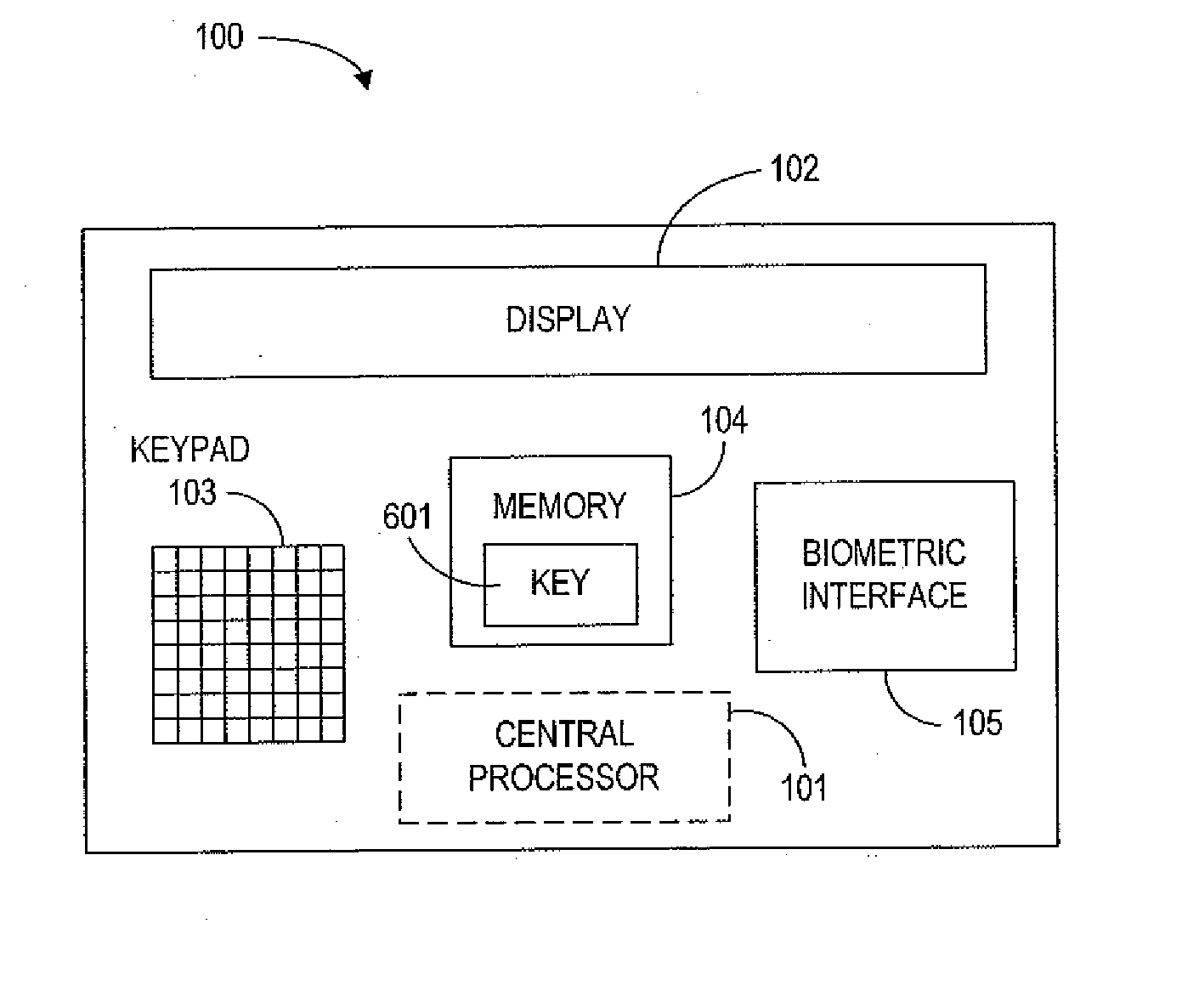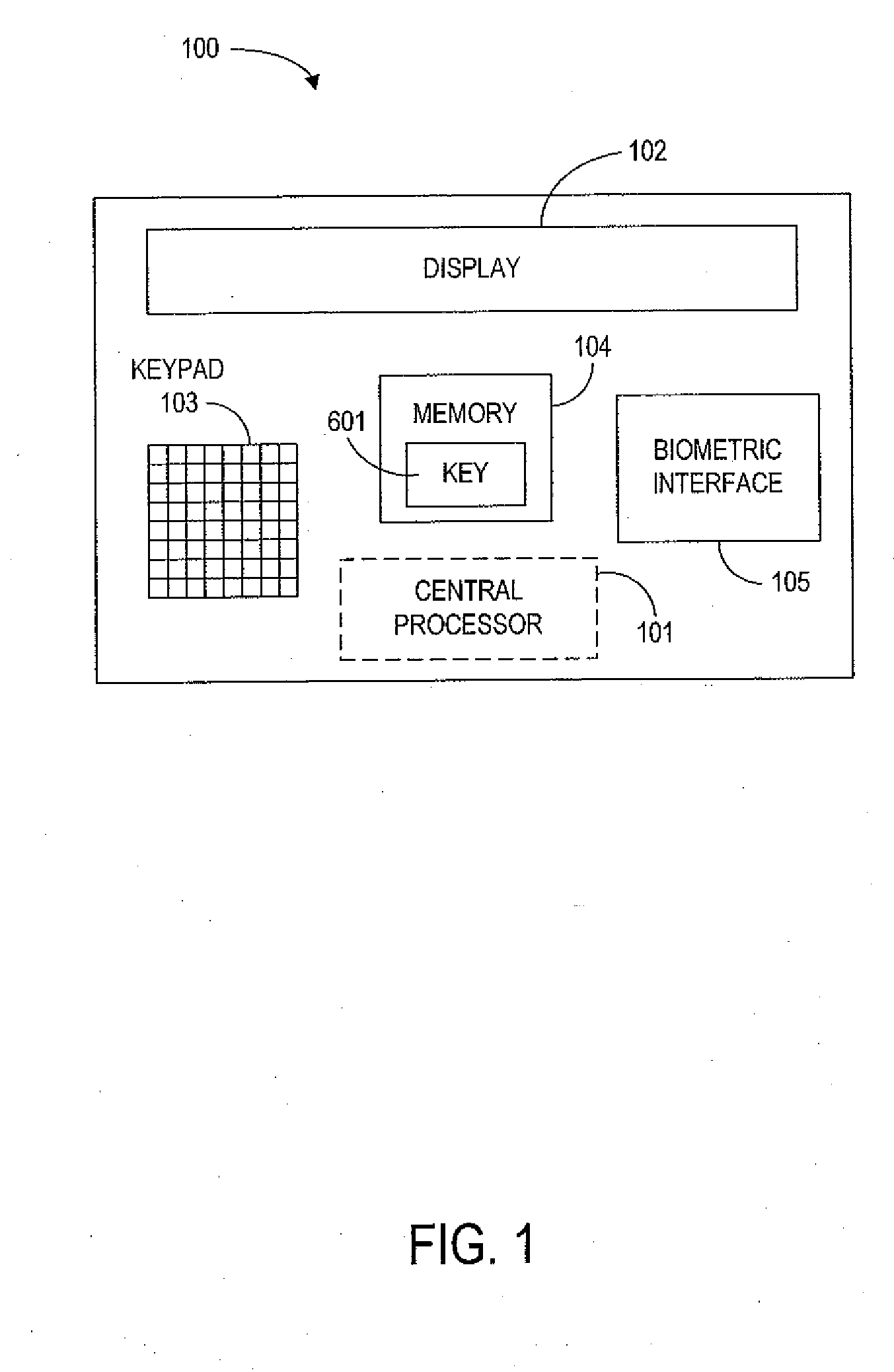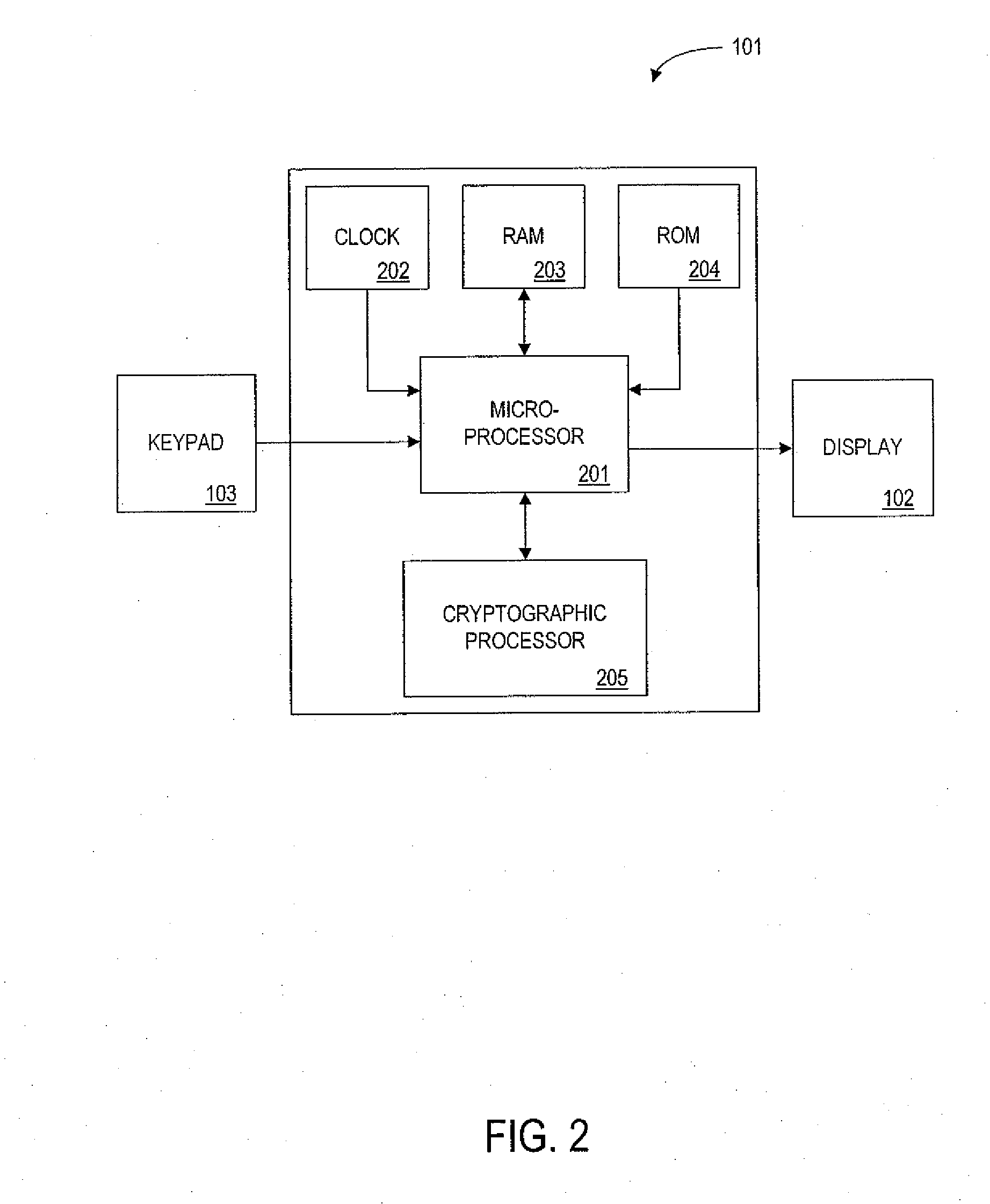Method and device for generating a single-use financial account number
- Summary
- Abstract
- Description
- Claims
- Application Information
AI Technical Summary
Benefits of technology
Problems solved by technology
Method used
Image
Examples
first embodiment (
Device Private Key Encryption)
[0049] In this embodiment, the single-use credit card number is generated by the device cryptoprocessor 205, using a private key 601 stored in the device memory 104 (preferably the ROM 204). The encryption data changes with each use of the card, so that the single-use encrypted credit card number is different for each transaction. This credit card number is distinct from the unchanging account number identifying the particular cardholder. It should be noted that knowledge of the account number does not allow an attacker to generate a valid single-use credit card number.
[0050] When the single-use credit card number is transmitted to a merchant, the merchant passes the number to the card issuer's central processor for authorization. The central processor decrypts the number based on a known algorithm, determines the true account number, and either authorizes or denies the charge.
[0051]FIG. 4 is a schematic diagram of the credit card issuer's central pro...
second embodiment (
Lists of Single-Use Credit Card Numbers)
[0089] In this embodiment, the device memory 104 includes a database with a list of single-use credit card numbers and a flag for each number indicating whether the number has already been used. The single-use credit card numbers are assigned to the cardholder by the credit card issuer.
[0090] One method to assign single-use credit card numbers is as follows. There are 253 possible credit card numbers. Some sort of central authority could assign ranges of account numbers to individual credit card companies. Once a company receives an r-bit range of account numbers they can further split the range of numbers up however they please. Ultimately, the credit card company would decide upon the size of the nonce (N bits), the account number (A bits), and the size of the IV (m bits) so that n+a+m=r. The account number would include those bits assigned by the central authority. Also, different card holders can have different values of n, a, and m even ...
PUM
 Login to View More
Login to View More Abstract
Description
Claims
Application Information
 Login to View More
Login to View More - R&D
- Intellectual Property
- Life Sciences
- Materials
- Tech Scout
- Unparalleled Data Quality
- Higher Quality Content
- 60% Fewer Hallucinations
Browse by: Latest US Patents, China's latest patents, Technical Efficacy Thesaurus, Application Domain, Technology Topic, Popular Technical Reports.
© 2025 PatSnap. All rights reserved.Legal|Privacy policy|Modern Slavery Act Transparency Statement|Sitemap|About US| Contact US: help@patsnap.com



